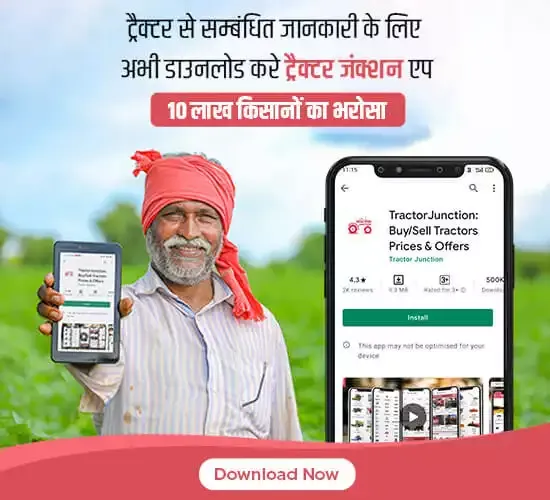Harvesting With The Help of Robot in Agriculture
Published - 27 Aug 2016
by Tractor Junction

The framework will be tested and used in the future series of harvesting robots, aiming on faster and more accurate harvesting cycle times.
A lot of manual labour has to be done in greenhouses. But increasingly fewer people are willing to do this hard, monotonous work. The robot to harvest ripe fruits fully autonomously is a result of the European FP7 project Clever Robots for Crops known as 'CROPS' which is coordinated by Wageningen UR Greenhouse Horticulture. After 4 years of research the integration of the final modules was completed.
A framework is developed for the motion control of harvest robots. By adding a camera to the end-effector of a robot, visual information can be used whilst the robot is moving towards the target. Additionally a three-dimensional reconstruction of the scene can be made.
During the past 4 years a sweet-pepper harvesting robot was developed in the European project CROPS. However it turned out that implemented approach was not yet optimal for recognising all fruit. This approach only analyzed a single perspective, after which path planning guides the robot blindly to the target. Unfortunately a single viewpoint is not sufficient to obtain enough information about the crop. In the new framework an alternative approach is implemented that should solve this problem.
or this, the plant is first scanned from multiple perspectives. After this the robot takes 3D pictures of them, assesses their colour and shape and then move towards the fruit incrementally, in each step using images from the end-effector to correct its pose. The robot only harvest those that fits the requirements. The robot can work perfectly in night as well as in hot environment. With robotics Wageningen UR improves the quality of life.The base of the robot consists out of a carrier platform on which a robotic arm with the end-effector to grip and cut the fruit, a compressor for the pneumatics, the control electronics, the computers and the sensors for fruit and obstacle detection are mounted. Localisation of ripe fruit takes place in two different stages.For this, the plant is first scanned from multiple perspectives. After this the robot takes 3D pictures of them, assesses their colour and shape and then move towards the fruit incrementally, in each step using images from the end-effector to correct its pose. The robot only harvest those that fits the requirements. The robot can work perfectly in night as well as in hot environment. With robotics Wageningen UR improves the quality of life.
How it Works?
The base of the robot consists out of a carrier platform on which a robotic arm with the end-effector to grip and cut the fruit, a compressor for the pneumatics, the control electronics, the computers and the sensors for fruit and obstacle detection are mounted. Localisation of ripe fruit takes place in two different stages.
3D camera Integrated in the Robotic Hand
First, a side view image of the canopy is taken by a colour camera and a Time of Flight camera. The images of both cameras get registered to have full information on colour combined with 3D data. After positioning the arm in front of the target fruit, a colour camera and a 3D camera integrated in the robotic hand are used to recalculate the fruit position with high accuracy.
Recently it was proven in a commercial greenhouse that the system can harvest ripe fruits fully autonomously.
CROPS Project
In the CROPS project fourteen partners from ten countries are participating. CROPS focuses on the development a new techniques for sensors, robot arms, grippers and intelligence, to be deployed in various agricultural applications. The robotic application for autonomous harvesting of sweet-pepper is realized in the Netherlands. The project is co-financed by the Dutch Horticultural Product Board (PT).
Milestone in Harvesting
The sweet-pepper harvesting robot developed in Wageningen is able to locate, to approach, to hold, to detach and to collect ripe fruits. The picking success rate of and the needed cycle time in practice is so far insufficient for commercial use but with the first ever working sweet-pepper harvesting robot in a realistic environment an important milestone has been reached. Experiments in a commercial greenhouse have yielded a wealth of data and information.
Recently, a new European research project was awarded to Wageningen UR for a period of three years. This new project will specifically focus on the further development of the pepper harvest robot.
During the first 18 months of the project the European projects partners settled the requirements for such a system and developed and tested modules for this prototype. These modules were now put together in Wageningen.
De robot manipulator is designed to grip and to cut the ripe fruits off the plants and to transport the fruits to a container.
Integrated Robotic System and International Co-operation
The main hardware piece, the robotic arm was developed by the Institute of Applied Mechanics of the Technical University of Munich (Germany). Jentjens Machinetechniek, Veghel, (The Netherlands) has built a carrier platform to transport the manipulator through the greenhouse. Festo (Germany) developed a special gripper to be able to grip sweet-pepper fruits. Under the lead of the Department of Computer Science of Umea University (Sweden) the first control software was assembled in a joint effort. Next steps are performing tests with the system in the real environment and the integration of sensors and intelligence for fruit and obstacle detection and localisation.
CROPS focuses on the development a new techniques for sensors, robot arms, grippers and intelligence to be deployed in various agricultural applications.
The development of the sweet-pepper robot is co-financed by the Dutch Horticultural Product Board (PT).



















